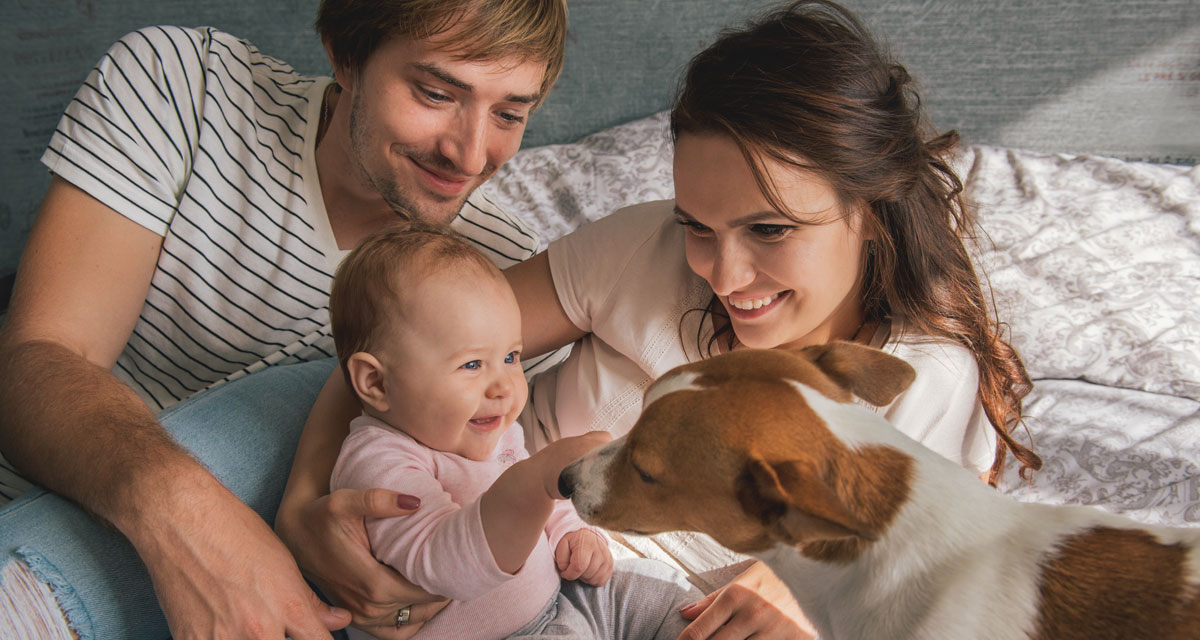Whether you have a precious new baby joining the family or you’re having the grandkids stay for the summer, it’s important to plan ahead for how you’ll introduce them to your furry family members. It can be exciting for both parties to meet one another, but doing so in a safe and well-thought-out way is always best.
Even if your pets have experience with babies and small children, it’s always a smart idea to treat it like the first time and go in with a game plan that’s sensitive to the possibility that each time may be a little different. Both children and animals can have different temperaments at different times of day and with new people and experiences.
In order to have the best introduction and experience possible for the entire family, here are a few tips to ensure safety and comfort for both human and fur babies alike.
Make sure to read the room. Everyone is getting acquainted, so remember to take both human and furry friends’ feelings into account. Is your new baby particularly fussy today and screeching a lot? That may make your pets extra anxious. Can you tell if your cat’s tail is fluffed out, and she is a little more tense right now? An excited child getting close to pet her may not work in your favor. Wait until everyone seems to be on their best behavior before introductions take place.
Choose neutral ground for meetings. You’ll want to avoid introducing pets to their hopefully new, tiny best friend during meal times and sleep. Think about it—would you want to be waked up to meet someone new, or interrupted while you’re eating breakfast? For dogs, who can often be a little more territorial, it’s often recommended to have them meet outdoors or in a part of the home they aren’t overly attached to.
Educate your littles about pets. Children are very interested in the world around them, and animals are no exception. For kids that are old enough to understand, they’ll be meeting a new furry friend, so take an opportunity beforehand to teach them how to best interact with the friend. How should they act around them? How should they not act? Does your pet love treats or ear scratches? Should they be aware of any specific behavior warnings your pet may exhibit if uncomfortable?
A little sniffing goes a long way. From puppies and cats to hamsters and bunny rabbits, letting your pet sniff your child is always a good idea before jumping into high-touch interactions. Ask your child to stick out their hand to see how your animal reacts. If you’re introducing a brand-new baby, have a piece of the baby’s clothing or a blanket they’ve used brought in first for the pets to sniff and get familiar with.
Don’t let your guard down just yet. Even if your pet has a sweet disposition and is interacting well with your child, it’s a good idea not to leave them unattended until you know for certain they are both comfortable with one another. Dogs and cats can sometimes get spooked easily, and their animal instincts can kick in, especially when they aren’t quite comfortable yet with their small new friend.
Create lasting bonds beyond the first meeting. They say a dog is a man’s best friend, but truthfully, many animals can bond beautifully with people—especially kids! The most important step to creating relationships between your child and your pet is respect. Have a healthy respect for your animals and their boundaries and natural instincts, and do what you can to help create a happy and healthy first few interactions. You will see the relationship between the two blossom into a special and beautiful bond over time.



















